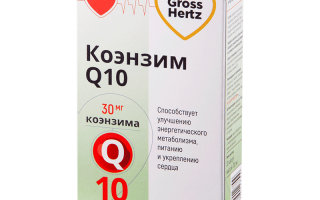Content
- 1 What is Coenzyme Q10
- 2 Coenzyme Q10 benefits for women and men
- 3 What foods contain Coenzyme Q10
- 4 Coenzyme Q10 preparations
- 5 Dosage and rules for taking coenzyme Q10
- 6 Features of the use of coenzyme Q10 during pregnancy
- 7 Potential harm and side effects
- 8 Contraindications for taking coenzyme Q10
- 9 Conclusion
- 10 Reviews of doctors and specialists
- 11 Customer Reviews
Among the various useful components, experts distinguish coenzyme Q10. The substance is involved in many vital processes. The benefits and harms of coenzyme Q10 are regularly the subject of controversy in the scientific community.
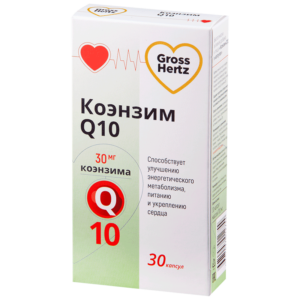
What is Coenzyme Q10
A coenzyme, or fat-soluble substance, based primarily on the mitochondria and responsible for the body's energy synthesis, is called coenzyme Q10. The trade name is ubiquinone. Coenzyme Q10 has significant life-prolonging benefits.
The term began to be used in 1955 when denoting a substance that is part of living cells. Coenzyme Q10 was first isolated by American specialists from bovine heart tissue. A drug based on a substance with the necessary properties was created in 1957.
The benefits of coenzyme Q10 are metabolic processes, energy transformation. A useful substance accumulates in the form of a universal energy source (ATP) necessary for internal processes. A significant amount of coenzyme Q10 accumulates in the liver, heart and brain, which is associated with energy requirements.
The coenzyme has characteristic properties. The structure of the substance resembles the structure of the molecules of vitamins K and E. The useful coenzyme Q10 can be found in mammalian cellular mitochondria. When viewed in its pure form, one can imagine yellow-orange crystals that are odorless or tasteless.
The properties of the coenzyme allow it to dissolve in fats and alcohol, but not in water. Coenzyme Q10 is susceptible to decomposition in the light. An emulsion of varying concentration can be created by adding water.
In medical practice, coenzyme is used due to its beneficial properties. Coenzyme Q10 is a natural antioxidant. The substance also has immunomodulatory properties.
The use of the substance lies in ensuring an adequate course of metabolic processes and inhibition of natural aging. A useful coenzyme is prescribed for the treatment and prevention of many pathological conditions.
Coenzyme Q10 benefits for women and men
Coenzyme Q10 is beneficial for both men and women by eliminating the effects of so-called free radicals. They are capable of causing harm, which is manifested by the development of various pathologies of a cardiovascular, immune and oncological nature.
The following beneficial properties of coenzyme Q10 are called:
- energy production at the cell level;
- a positive effect on the work of the nervous, cardiovascular systems;
- increased breakdown of excess adipose tissue;
- stimulation of the functioning of the immune system;
- slowing down aging;
- providing protection against free radicals that harm the body;
- regeneration of the gum mucosa.
Heart health
Coenzyme Q10 benefits the heart due to its key properties. Cardiovascular pathologies that cause significant harm to the body are the most common indications for taking ubiquinone.
Experts recommend taking a coenzyme for coronary atherosclerosis. With this pathology, cholesterol is deposited inside the vascular walls. Over time, the lumen of the arteries becomes narrower, which causes significant damage to the functioning of the heart. Oxygenated blood does not flow well to the main muscle. With emotional and physical stress, severe pain occurs.
Since coenzyme Q10 has beneficial properties, the deposition of cholesterol on the vascular walls does not occur. The benefit also lies in the elimination of cyanosis and swelling of the limbs. Important properties of the element make it possible to use it in the treatment of chronic heart failure.
Effect on the skin
The element is beneficial when used in cosmetology due to its healing properties. Antioxidant promotes:
- fight against free radicals;
- maintaining skin elasticity;
- supplying cells with energy;
- improvement of regeneration processes;
- stimulation of collagen synthesis;
- smoothing wrinkles;
- relieving inflammation.
Coenzyme Q10 benefits facial skin. That is why it is usually included in various cosmetics. Thanks to its beneficial properties, it nourishes the skin and prevents the loss of necessary moisture.
Weight loss
The benefits of coenzyme Q10 are to stimulate weight loss. This is due to the property of the element to speed up the exchange processes. Thus, ubiquinone is a natural fat burner. The substance is actively used by athletes, for example, during the drying period.
Slow down aging
Coenzyme Q10 slows down the aging process due to its antioxidant properties. The regular intake of the element into the body helps to prolong youth and restore the functioning of internal organs.
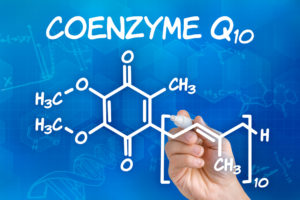
Lowering blood pressure
Coenzyme has the ability to reduce blood pressure in hypertensive patients. This effect is achieved due to vasodilation.
With diabetes
Numerous studies have proven the beneficial properties of ubiquinone. The element normalizes glucose levels. Coenzyme Q10 is often prescribed as part of complex therapy for diabetes mellitus.
Cancer prevention
There is evidence that the element prevents the development of malignant tumors. This is due to the property of the substance to eliminate free radicals that lead to oncopathologies.
Reducing headaches
Studies have shown that CoQ10 can reduce the intensity of headaches due to its beneficial properties. It is believed that the substance does not affect the frequency of migraines and headaches.
Benefits in sports training
Coenzyme is vital for people involved in sports. The substance is responsible for energy metabolism and helps to eliminate fatigue. The muscles of the body, including the heart, need a sufficient supply of ubiquinone along with food or medications.
What foods contain Coenzyme Q10
The beneficial coenzyme Q10 is found in various foods. Their regular consumption allows you to prevent various pathologies that arise with a lack of an element.
Significant amounts of coenzyme Q10 can be found in the following foods:
- meat: venison, beef, heart, chicken (including liver and heart);
- seafood and fish: sardines, herring, herring, mackerel, horse mackerel, salmon, pike, flounder, shrimp, minke whale, mussel;
- eggs and dairy products: butter, cheeses, cottage cheese, kefir, yogurt, cream;
- legumes and nuts: peanuts, sesame seeds, and olive, soybean and corn oils;
- greens: parsley, soy, broccoli.
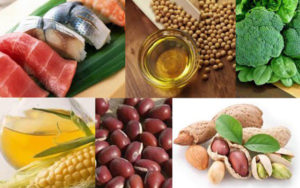
Coenzyme Q10 preparations
Gradually, the internal organs are subject to wear and tear. The amount of coenzyme synthesized in the liver is insufficient to meet all the needs of the body. The lack of ubiquinone for the functioning of the heart is especially pronounced.
The need for coenzyme can significantly increase due to intense physical activity, stress, SARS. Often, the amount of ubiquinone contained in various foods is insufficient for adequate body functioning.
The element should be supplied in food at a dose of 100 mg (per day). That is why experts usually recommend taking various drugs to provide the body with a useful substance.
Coenzyme Q10, whose benefits and harms for women are described in various medical sources, is considered a fat-soluble coenzyme. This explains why the substance is usually prescribed in oily solutions. In this form, the maximum assimilation of the useful component is noted.
Ubiquinone is also available in powder, ampoule, and tablet form, which contain various beneficial ingredients. However, in order for the drug to be useful, it must be combined with fatty foods. Coenzyme Q10 drops are added to drinks. Chewable lozenges also contain vitamin E.
Among the most famous drugs, including ubiquinone, experts call Kudesan. The benefit of this drug lies in the content of vitamin E. This component, due to its properties, prevents the destruction of coenzyme.
Kudesan is available in several dosage forms:
- drops;
- tablets;
- chewable baby lozenges.
The following drugs containing coenzyme Q10 are called and have significant benefits:
- Coenzyme Q10 Doppelherz Active (supplement includes vitamins, fatty acids and minerals);
- Omeganol (capsules with added fish oil);
- Fitline Omega (drops with vitamin E);
- Coenzyme Q10 with bioperine (with black pepper fruit extract).
Dosage and rules for taking coenzyme Q10
So that the element does not harm the body, its dosage must be prescribed by a specialist. Prophylactic administration involves the use of 1 mg of a substance per 1 kg of body weight. In the presence of pathologies of moderate severity, the dosage is increased to 2 mg. Severe disease requires the appointment of ubiquinone at a dosage of 3 mg per 1 kg of body weight.
Before use, it should be borne in mind that the daily rate is divided into 2 or 3 doses. The drug in the form of capsules should be taken during, after meals.
It is not recommended to increase the dosage on your own. The course of therapy is 1-6 months. A repeated treatment course can be repeated in a month.
Features of the use of coenzyme Q10 during pregnancy
To eliminate potential harm, it is undesirable to use drugs during pregnancy. This is due to the lack of adequate research and information about possible harm to mother and child.
Potential harm and side effects
Coenzyme Q10 is not significantly harmful. To avoid potential harm, contraindications for admission and the possibility of overdose should be considered.
The following side effects and signs indicating an overdose are distinguished:
- nausea or vomiting;
- rash;
- sleep disturbance;
- headaches and dizziness;
- decreased appetite;
- diarrhea.
Contraindications for taking coenzyme Q10
Taking supplements when contraindicated can be harmful to health. Experts identify the following contraindications for admission:
- pregnancy;
- lactation;
- hypotension;
- glomerulonephritis in the acute phase;
- exacerbation of ulcerative processes in the duodenum and stomach;
- hypersensitivity reactions.
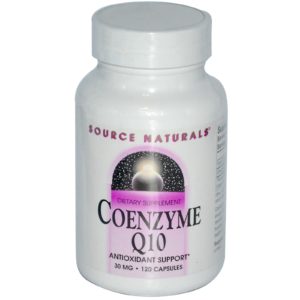
Conclusion
The benefits and harms of coenzyme Q10 are beyond question. Ubiquinone has a beneficial effect on the heart and blood vessels, metabolic processes. The element helps to slow down organ wear and skin aging due to its properties.

